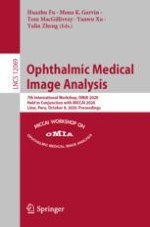2020 | OriginalPaper | Buchkapitel
What is the Optimal Attribution Method for Explainable Ophthalmic Disease Classification?
verfasst von : Amitojdeep Singh, Sourya Sengupta, Jothi Balaji J., Abdul Rasheed Mohammed, Ibrahim Faruq, Varadharajan Jayakumar, John Zelek, Vasudevan Lakshminarayanan
Erschienen in: Ophthalmic Medical Image Analysis
Aktivieren Sie unsere intelligente Suche, um passende Fachinhalte oder Patente zu finden.
Wählen Sie Textabschnitte aus um mit Künstlicher Intelligenz passenden Patente zu finden. powered by
Markieren Sie Textabschnitte, um KI-gestützt weitere passende Inhalte zu finden. powered by
